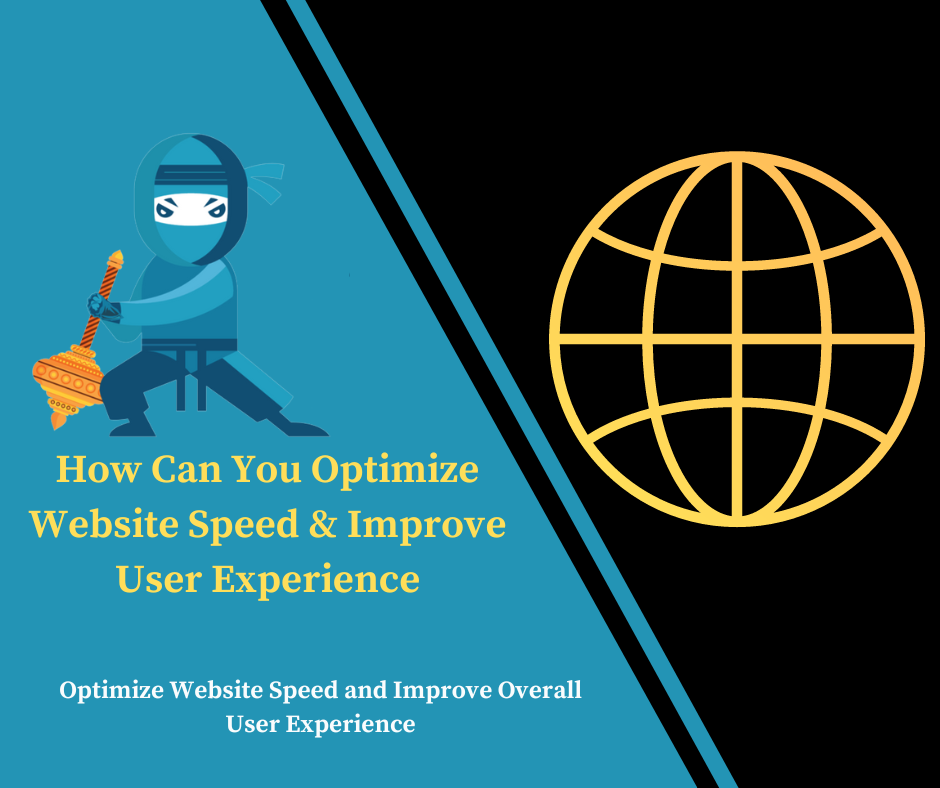How Can You Optimize Website Speed & Improve User Experience?
In today’s fast-paced digital world, website speed is crucial. A slow website can frustrate users, lead to higher bounce rates, and negatively impact your search engine rankings. On the flip side, a fast-loading website enhances user experience, boosts engagement, and drives conversions. In this article, we’ll explore effective strategies to optimize website speed and improve overall user experience.
Why Optimize Website Speed?
Before diving into the how-to, let’s understand why optimizing website speed is essential:
User Experience: A fast website provides a smoother, more enjoyable experience. Users expect pages to load quickly, and delays can lead to frustration and abandonment.
SEO Rankings: Search engines, particularly Google, consider website speed as a ranking factor. Faster sites are more likely to rank higher in search results.
Conversion Rates: Faster websites tend to have higher conversion rates. Slow loading times can deter potential customers from completing purchases or signing up for services.
Mobile Performance: With an increasing number of users accessing websites via mobile devices, optimizing speed is crucial for mobile user satisfaction.
Strategies to Optimize Website Speed
Choose a Reliable Hosting Provider
Your web hosting service plays a significant role in your website’s speed. Opt for a reputable hosting provider that offers fast servers and good customer support. Consider using a Content Delivery Network (CDN) to distribute your content globally, reducing latency and improving load times.
Optimize Images
Images often account for a significant portion of a website’s total page weight. To optimize images:
Compress Images: Use tools like TinyPNG or ImageOptim to reduce file sizes without sacrificing quality.
Use the Right Format: Choose the appropriate image format (JPEG for photographs, PNG for graphics with transparency, and WebP for a mix of both).
Implement Lazy Loading: This technique delays the loading of images until they are needed, improving initial page load times.
Also read: How to Increase Conversion Rates Tips for E-Commerce Success
Minimize HTTP Requests
Each element on your page, including scripts, stylesheets, and images, requires an HTTP request. Reduce the number of requests by:
Combining Files: Merge CSS and JavaScript files to minimize the number of requests.
Using CSS Sprites: Combine multiple images into a single image file to reduce HTTP requests.
Leverage Browser Caching
Browser caching allows you to store static resources (like images, CSS, and JavaScript) on users’ devices. When a user revisits your site, their browser can load these resources from the cache rather than requesting them from the server again. Set appropriate cache expiration dates for your static resources.
Minify CSS, JavaScript, and HTML
Minification involves removing unnecessary characters (like spaces and comments) from your code to reduce file sizes. Tools like UglifyJS for JavaScript, CSSNano for CSS, and HTMLMinifier can help with this process.
Enable Gzip Compression
Gzip compression reduces the size of your website’s files before sending them to users’ browsers. Most modern web servers support Gzip compression. Ensure it’s enabled to reduce load times and save bandwidth.
Optimize Your Website’s Code
Clean, efficient code improves website performance. Ensure your code is free of errors and follows best practices. Use tools like Google PageSpeed Insights or Lighthouse to identify and address coding issues.
Reduce Redirects
Each redirect creates an additional HTTP request and response cycle, which can slow down your site. Minimize the use of redirects and ensure that necessary ones are as efficient as possible.
Implement Asynchronous Loading for JavaScript
By default, JavaScript files are loaded synchronously, blocking the rendering of the page until they are fully loaded. Implement asynchronous loading for JavaScript files to allow the page to render while the scripts are being loaded in the background.
Monitor and Analyze Performance Regularly
Continuously monitor your website’s performance to identify and address speed issues promptly. Use tools like Google Analytics, GTmetrix, and Pingdom to track your site’s speed and gain insights into areas for improvement.
Benefits of Optimizing Website Speed & Improving User Experience
1. Increased User Satisfaction
Faster Load Times: A speedy website ensures that visitors can access content quickly, leading to a more enjoyable browsing experience.
Reduced Frustration: Minimizing wait times helps prevent user frustration and abandonment, encouraging longer visits and more engagement.
2. Lower Bounce Rates
Retention: Faster load times keep visitors on your site longer, reducing bounce rates and increasing the chances of conversions.
First Impressions: A quick-loading site creates a positive first impression, which can encourage users to stay and explore further.
3. Improved Conversion Rates
Enhanced Usability: A smooth and efficient browsing experience leads to higher user satisfaction, which can translate into increased conversions and sales.
Streamlined Checkout: Faster load times and optimized processes make it easier for users to complete transactions, reducing cart abandonment.
4. Better SEO Rankings
Search Engine Optimization: Search engines like Google consider page speed as a ranking factor. Faster sites are more likely to rank higher in search results, leading to increased visibility and traffic.
Indexing Efficiency: Improved speed can help search engines crawl and index your site more effectively, enhancing overall site performance in search results.
5. Enhanced Mobile Experience
Mobile-Friendly: As mobile traffic continues to rise, optimizing speed ensures a seamless experience for mobile users, which is crucial for capturing and retaining mobile audiences.
Responsive Design: Fast load times on mobile devices improve user satisfaction and engagement, making it easier for users to interact with your site on the go.
FAQs
How do I know if my website needs speed optimization?
You can use website speed testing tools like Google PageSpeed Insights, GTmetrix, or Pingdom to analyze your site’s performance. These tools provide detailed reports on loading times and offer recommendations for improvement.
What is a good loading time for a website?
Ideally, your website should load within 2-3 seconds. Research shows that users tend to abandon sites that take longer than 3 seconds to load. Aim for as fast a loading time as possible to ensure a positive user experience.
Can website speed optimization affect SEO?
Yes, website speed is a critical factor in SEO. Search engines, especially Google, use site speed as a ranking factor. A faster website can improve your search engine rankings and visibility.
How often should I test my website’s speed?
Regular testing is recommended, especially after making changes to your site or adding new content. Aim to test your website’s speed at least once a month or whenever significant updates are made.
Will optimizing images always improve website speed?
Optimizing images can significantly reduce file sizes and improve load times, but it’s just one aspect of speed optimization. Combine image optimization with other techniques, such as minifying code and leveraging browser caching, for the best results.
Are there any tools to help with website speed optimization?
A6: Yes, several tools can assist with optimizing website speed. Popular options include Google PageSpeed Insights, GTmetrix, Pingdom, and WebPageTest. These tools provide valuable insights and recommendations for improving your site’s performance.
Conclusion
Optimizing website speed is not just about improving load times; it’s about enhancing the overall user experience. By implementing the strategies outlined in this article, you can create a faster, more efficient website that meets users’ expectations and supports your business goals. Regularly monitor your site’s performance and stay updated on best practices to maintain a high-speed, user-friendly website. Optimizing website speed is a continuous process, but the benefits are well worth the effort. A fast-loading site leads to happier users, better SEO rankings, and increased conversions. So, start optimizing today and watch your website’s performance soar.








